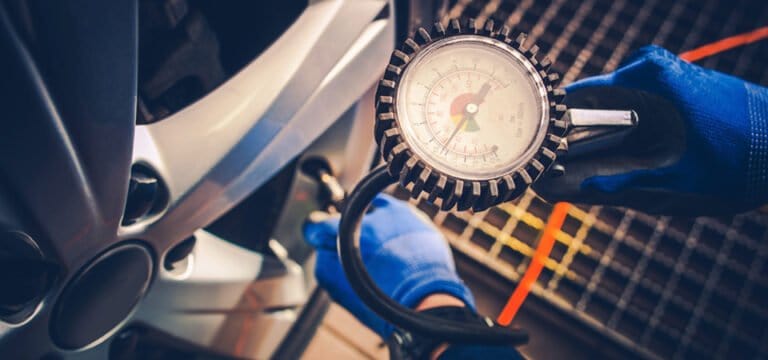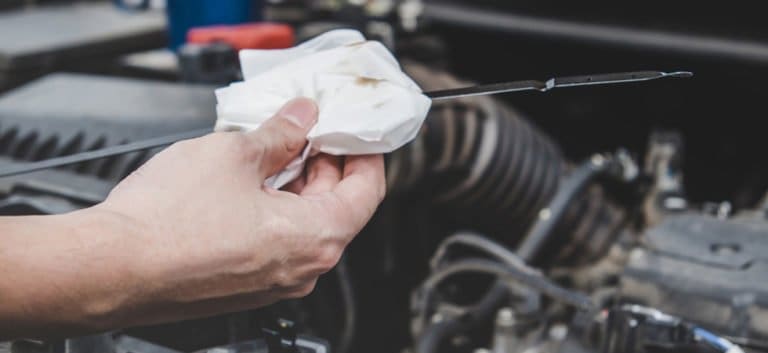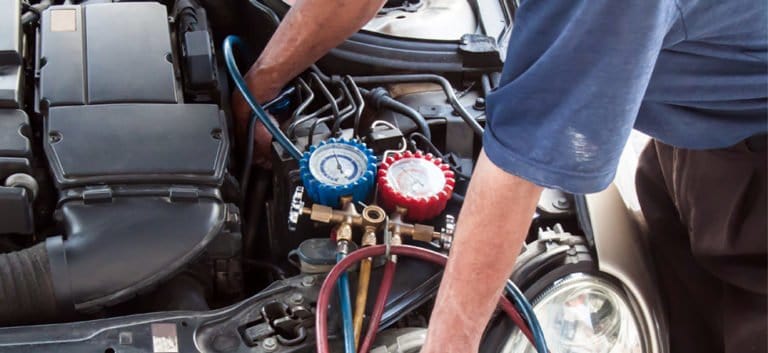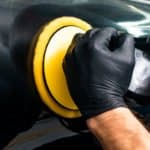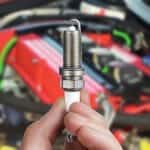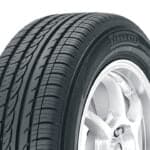Affiliate Disclosure: Some of the links in this post are affiliate links. As an Amazon Associate, we earn from qualifying purchases. Read more in our affiliate policy.
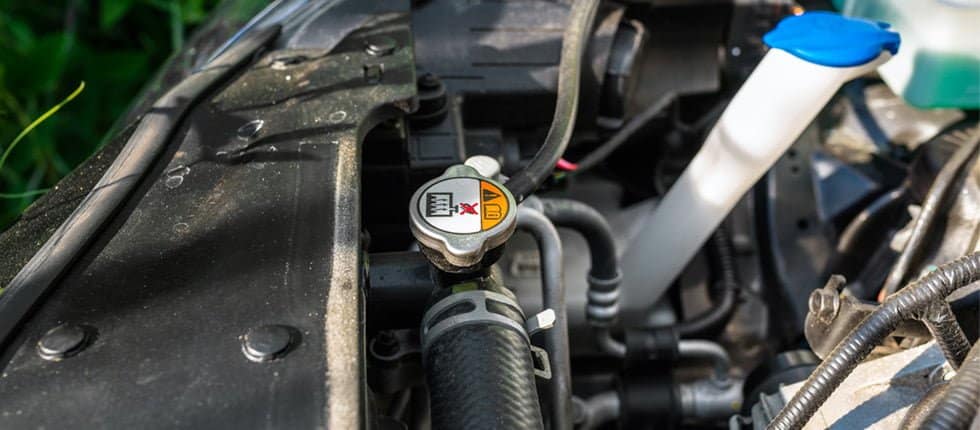
Bad Radiator Cap Symptoms – Recognize Signs Of The Faulty Cap And Fix It!
The machinery under your car’s hood is really hardworking pieces that get your car going to take you from point A to point B. And boy, these tiny moving parts get hot when in operation. So in this article, we are going to discuss exactly that, TINY yet really essential piece to your car’s puzzle, the radiator cap.
As for everything, when you’re familiar with how your radiator cap works, you’d easily identify if the cooling problem you are having is caused by it.
So, here we go, we’re going to talk about bad radiator cap symptoms and when is it time to fix it (if you can) and whether it’s time to replace it. Only from Garage Chief!
Bad Radiator Cap Symptoms
Before we start: Definitions
It would really be important to talk about your car’s entire cooling system first as it is essential to understanding not just for what it’s for but to understand the importance and the function of your radiator cap better.
Radiator Cap
The radiator cap is actually a pressure valve that task is to capture overflowing coolant fluid. Think of it as a release valve that at 15 pounds per square inch or psi, it opens to allow heat escape and the coolant fluid to overflow into the expansion tank to continue the cooling cycle.
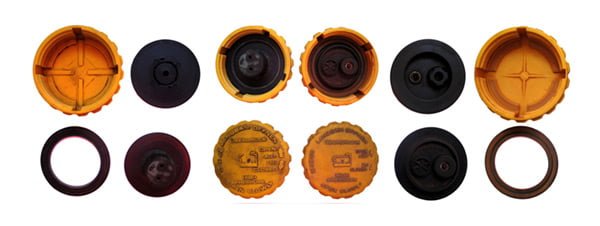
Radiator
A radiator is a heat exchanger. It is employed to transfer thermal energy from one thing to another for cooling purposes. In the case of your car, it transfers heat from your coolant fluid to the air.
Water Pump
Basically the heart of the car’s cooling system as it pumps coolant throughout. It circulates fluid whenever your engine is up and running, from the pump, coolant leaves to the engine block then off to the cylinder head and into the radiator and back to the pump.
Thermostat
A valve that regulates the flow of the coolant, and helps maintain the proper operating temperature. It sits between your engine and your radiator and only allows coolant to flow to the radiator as needed for it gets rid of the excess heat.
Expansion tanks
It’s where the overflowed coolant goes when necessary. It’s like an extra container for the fluid and is used accordingly either until the pressure goes down or when there’s an excessive amount of it.
So now that we pretty much have the idea of how the cooling system in your car works, we’ll move on to discussing different aspects of the radiator cap, especially bad radiator cap signs.
More about the radiator cap
The radiator cap has 2 essential parts, the pressure valve, and the spring mechanism. We mentioned that a radiator cap’s pressure rating is at 15 psi, it actually ranges from 13 psi to 16 psi with high performance ranging from 19 psi – 32 psi.
As the coolant in your system heats up and expands the spring mechanism compresses and your coolant flows into your expansion tank. The pressure valve makes sure to protect your radiator at all times and would protect it from accidentally overflowing.
Bad Radiator Cap Signs
So your car overheats, but that’s okay, you tinker on your engine a little bit, and voila it’s running back to normal again. But then it does it again, you’re confused and irritated, what’s going on?
That’s why it’s important to identify whether it’s the radiator cap that’s the culprit, it might save you a lot of time, effort and all that hassle, imagine finding out when you’re on a vacation or going somewhere really important.
We’re getting to the meat of our discussion and the following are the symptoms of a bad radiator cap:
- Leaking Coolant / Low coolant levels
- Overflowing Reservoir / Expansion tank
- Radiator hose collapsing
- There’s air inside the cooling system
- Engine overheating
Leaking Coolant / Low coolant levels
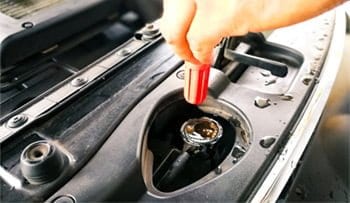
Look for coolant residues or dried up the coolant that’s surrounding your radiator or radiator cap, when it’s leaking then it should be evident enough.
When the pressure is too much then it’ll leak out in all the possible places, the cap, the hose, the radiator or the water pump.
That’s why you always will have low coolant levels. It’s because the cap isn’t functioning properly and not doing what it’s supposed to. Also, take note if your radiator cap is stuck, it may be the coolant that’s dried up.
These are definitely signs of a bad radiator cap losing coolant.
Overflowing Reservoir / Expansion tank
We discussed what the expansion tank is for and as we already know it’s where the coolant goes when necessary. So one faulty radiator cap symptom is when your expansion tank is always or very easily gets full. It’s simply because the radiator cap keeps on releasing coolant over to it even if the pressure is still not on the desired levels.
Naturally, your expansion tank or reservoir will definitely overflow.
Radiator hose collapsing
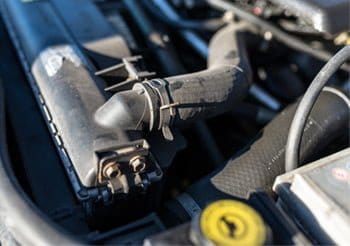
Check if the hose is flattened or kinked so you can be sure that it’s your radiator cap’s return seal that’s failing.
There’s air inside the cooling system
Being a valve, when it malfunctions, the radiator cap would either let stuff in or stuff out erroneously. So in this case when it is damaged or malfunctioning it can let air in the radiator cooling system.
This, in turn, will create air pockets and will mess everything up, from your heater core to your thermostat to your radiator hoses. These components won’t be able to do their jobs properly, as they can’t sustain the temperature in the desired levels because the air is just going to throw them off.
Engine Overheating
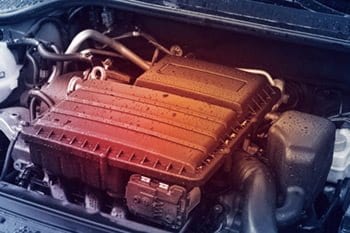
So naturally, your engine might not get the desired cooling effects that it needs to operate properly thus, overheating.
It is important to stop your engine or your car immediately, wait for some time before popping your hood and check on it.
TIP: Take note to be careful not to burn or scald yourself, practice necessary caution.
Testing the Radiator Cap
-
Visual inspection
Check for any coolant residue or leaks in the surrounding area of your radiator or radiator cap.
Contrary to belief a common misconception is when coolant is bubbling it’s probably the radiator cap but it’s not it’s not even the head gasket. It’s most likely your thermostat that’s causing the symptom.
-
Loosen the cap
It’s important to take note that the goal here is just to loosen the cap only. Make sure not to burn yourself or open it all the way as the pressure inside the radiator may cause the coolant inside to burst out and burn you.
So the goal here is to let your engine run for a few minutes, then loosen the radiator cap and see if it will let pressurized water out in the form of steam. If it doesn’t, then it may be time to replace it.
-
Use a pressure tester (recommended)
Make sure to have your radiator pressure tester, some cloth, coolant, tray, and enough light if necessary, toolbox and hand gloves to perform this.
WARNING: Again don’t remove the radiator cap while the engine is running or when the coolant temperature is not normal.
First, remove the radiator cap.
Attach the radiator cap pressure tester to the radiator cap.
Next is to pump the pressure handle until it reads the range or the exact pressure say 15 psi for the specific radiator cap. If the pressure reading falls below then you have a faulty radiator cap.
Faulty Radiator Cap – Fix or Replace?
Really, a radiator cap won’t cost you much. So when you’ve ascertained that it is really what’s causing the issues you’ve been having then we would recommend that you just go ahead and buy yourself a new one.
But, there’s one trick you might just do and the secret ingredient is – pepper. Here’s how it works.
Pepper is known to stop leaks so it may just help with the leaks if that’s the only problem that you’re having.
Remove the cap, get an ounce of black pepper and add it to the water or coolant in your radiator. Then, put your radiator cap back into place.
Drive around for a few minutes then inspect, if you’re still having leaks then it may be time to replace the cap. If the cap is damaged as observed through visual inspection like it’s cracked or the valves or seals are in bad physical shape, you most definitely need a new one. (You always have the option to check with professionals)
You can also use professional radiator sealants. Read our related post on best radiator stop leak products to find more.
Radiator Cap Replacement Cost
So what’s the radiator cap replacement cost? Well, radiator caps are cheap and will save you from a lot of headaches. Its price range is from $5 to maybe $20 tops.
Make sure to get the brand for your car and make sure to check on the psi levels you would need.
Trusted Brands
We have a shortlist of some of the best brands for your radiator cap:
- AC Delco RC85 GM original equipment (15 psi) radiator cap
- Stant 10231 (16 psi vented) radiator pressure cap
- Motocraft RS 527 Radiator Cap
- Stant 10230 Radiator Cap
- AC Delco RC98 GM original equipment (15 PSI) radiator surge tank cap
- Outlaw racing high pressure temp gauge radiator cap 1.8 + real time monitoring
- Gates 31412 Radiator Cap
- PT auto warehouse R126 (16 psi) Radiator Cap
Faulty Radiator Cap Signs – Additional Tips
Amidst all of this talk about diagnosing and replacing your radiator cap, it’s important to take note that your best defense against the faulty cooling system is proper maintenance.
Here are some things to consider:
- Make sure you have the appropriate levels of fluid at all times. Make sure to always have that 50/50 water mix with your coolant or purchase an already prepare coolant mixture.
- Always make sure to properly put the cap on tight.
- Clean your radiator. Make sure to have regular, say about twice a year cleaning schedule of your radiator, it will do wonders for your system, we promise.
- Get your radiator flushed and filled yearly.
Bad Radiator Cap Symptoms – The Bottom Line
And here we end our blog post about bad radiator cap symptoms and signs. Here at garagechief.com your car’s welfare is our priority. So to help you maintain it and give you ample knowledge about your vehicle is our goal.
We hoped you gathered enough information about your car’s cooling system and would from this point on keeping a closer eye on it, as it’s a vital part to keep your engine running.
As always be careful with your trips!
Last update on 2024-04-19 / Affiliate links / Images from Amazon Product Advertising API
Disclaimers
All product names, logos, and brands are property of their respective owners. All company, product and service names used in this website are for identification purposes only. Use of these names, logos, and brands does not imply endorsement.
It is our policy to make every effort to respect the copyrights of outside parties. If you believe that your copyright has been misused, please provide us with a message stating your position and we will endeavor to correct any misuse immediately.
Some of the links in this post are affiliate links. As an Amazon Associate, we earn from qualifying purchases. This means if you click on the link and purchase the item, we may receive an affiliate commission, at no extra cost to you. This helps us keep this website alive. Read more in our affiliate policy.

